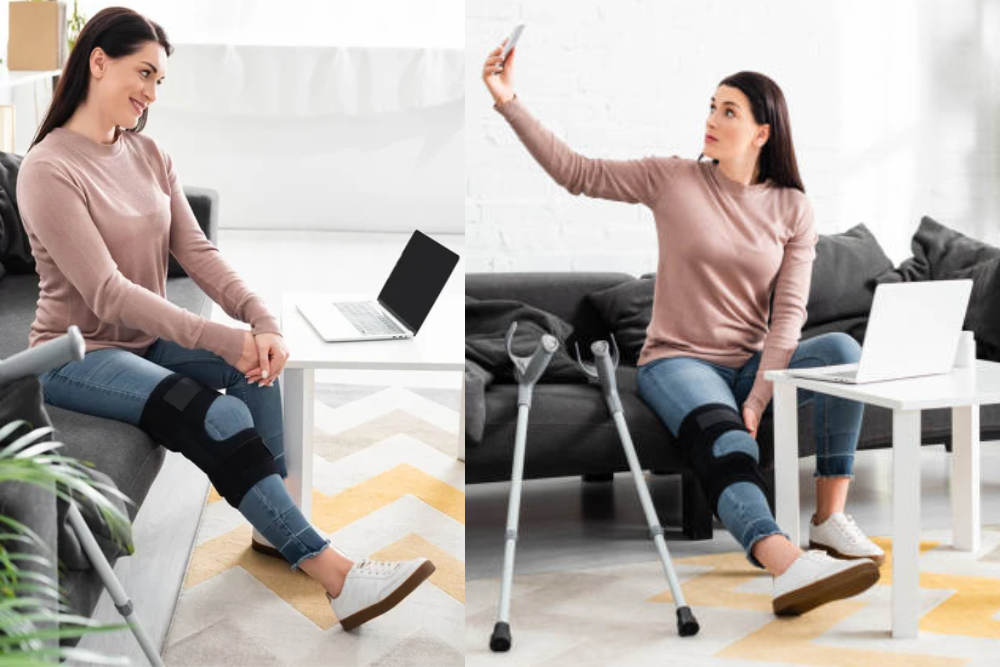Mobility is one of the greatest gifts of life, yet many people face walking difficulties due to injuries, medical conditions, or age-related weakness. For such individuals, leg braces to help you walk can be life-changing. These devices are designed to restore balance, improve stability, and reduce pain, allowing patients to regain confidence in their daily routines.
In this comprehensive guide, we will cover:
- What are leg braces to help you walk
- Different types of leg braces to help you walk
- Their benefits and ideal users
- Tips on choosing the right brace
- Expert answers to the most common FAQs
- By the end, you’ll have a complete understanding of how these devices can
- enhance independence and improve quality of life.
What Are Leg Braces to Help You Walk:
Leg braces to help you walk are orthopedic braces supports that provide structural stability and alignment to the lower limbs. They are usually recommended by doctors or orthotists for people who face mobility issues due to.
- Stroke recovery or paralysis
- Cerebral palsy and neuromuscular disorders
- Polio after-effects and muscle weakness
- Arthritis and chronic knee pain
- Foot drop and ankle instability
- Post-fracture or surgical rehabilitation
By providing targeted support, braces reduce the risk of falls, improve posture, and make walking safer and less tiring.
Types of Leg Braces to Help You Walk:
Walking difficulties can result from different conditions, which is why multiple types of braces exist. Let’s look at the most common leg braces to help you walk.
1. Knee Braces to Help You Walk
Knee joints often face stress due to arthritis, injuries, or surgeries. Knee braces to help you walk provide compression and support to reduce pain and restore daily mobility.
2. Ankle-Foot Orthosis (AFO)
AFO leg braces to help you walk are designed to correct foot drop, a condition where lifting the foot becomes difficult. They stabilize the ankle, prevent tripping, and are widely used for stroke survivors, cerebral palsy, and multiple sclerosis patients.
3. KAFO (Knee-Ankle-Foot Orthosis)
For individuals with severe muscle weakness, KAFO leg braces extend from the thigh down to the foot. They support both the knee and ankle joints, making walking possible even with significant weakness.
4. HKAFO (Hip-Knee-Ankle-Foot Orthosis)
When mobility challenges extend beyond the knee, HKAFO braces are recommended. These braces cover from hip down to foot, offering complete lower-body support for those with advanced neuromuscular disorders or paralysis.
5. Functional & Custom
Sometimes, a standard brace may not work. In such cases, functional or custom leg braces to help you walk are designed specifically for an individual’s condition, such as sports injuries or post-surgery rehab.
Benefits of Leg Braces to Help You Walk:
Here’s a detailed table showing how different leg braces benefit patients and who they’re best suited for.
| Type of Brace | Key Benefits | Preferred For |
| Knee Braces to Help You Walk | Reduces pain, stabilizes knee, restores mobility | Arthritis, ligament injuries, post-surgery patients |
| AFO Braces to Help You Walk | Corrects foot drop, stabilizes ankle, prevents falls | Stroke, cerebral palsy, multiple sclerosis |
| KAFO Braces to Help You Walk | Provides knee & ankle support, restores walking ability | Polio survivors, muscle weakness, spinal cord injury |
| HKAFO Braces to Help You Walk | Full limb support, aids posture, prevents serious falls | Severe paralysis, neuromuscular disorders |
| Functional Braces to Help You Walk | Customized rehab support, improves walking training | Post-surgical rehab, sports injuries |
How Do Leg Braces to Help You Walk Improve Daily Life:
-
Stability & Balance – They minimize the risk of falls and give confidence while walking.
-
Pain Reduction – By aligning joints, they reduce unnecessary stress.
-
Posture Improvement – Proper support improves walking posture.
-
Rehabilitation Support – Essential in post-surgical and post-fracture recovery.
- Increased Independence – Allow patients to perform daily tasks with minimal assistance.
How to Choose the Right Leg Braces to Help You Walk:
Choosing the right brace is critical for effectiveness. Here are key points.
-
Medical Consultation: Always seek guidance from a doctor or orthotist.
-
Customization: For long-term conditions, custom leg braces to help you walk provide better results.
-
Comfort: Choose lightweight materials with proper padding.
-
Footwear Compatibility: Ensure your brace fits with supportive shoes.
- Condition-Specific Design: Select the right brace type based on your medical diagnosis.
FAQs:
1. Can leg braces to help you walk restore normal walking?
Yes. While leg braces improve stability and gait, full recovery depends on your health condition and therapy.
2. Are leg braces to help you walk comfortable for long use?
Yes. Modern designs are lightweight and padded. Most users adjust to braces within a few days.
3. Do I need to wear leg braces to help you walk every day?
It depends on your condition. Some patients use leg braces only during rehabilitation, while others require them permanently.
4. Can I use regular shoes with leg braces to help you walk?
Yes. Most leg braces are designed to fit inside shoes, but orthopedic footwear provides maximum comfort.
5. Are custom leg braces worth the cost?
Yes. Custom leg braces are tailored to your exact body measurements, ensuring comfort and effectiveness.
Final Thoughts:
Living with mobility challenges can feel overwhelming, but with the right leg braces to help you walk, patients can experience a significant improvement in independence and quality of life. From knee support to full limb orthosis, there is a brace designed for every need.
If you or a loved one is struggling with walking difficulties, consulting a healthcare professional is the first step toward finding the right leg braces. With proper guidance, the right device can restore confidence, reduce pain, and bring back the freedom of movement.
DME of America Inc. provides a wide range of durable medical equipment, including leg braces to help you walk, ensuring comfort, safety, and better mobility.

